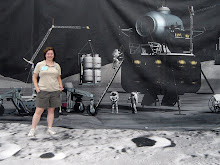(Crossposted from WIPSB)
Nepotism and sexism in peer-review
Christine Wennerås & Agnes Wold
Nature 387, 341 - 343 (22 May 1997); doi:10.1038/387341a0
This is a seminal paper - widely-cited and definitely worth reading. It touches on several issues that we brought up at the LPSC breakfast, including whether women are “naturally” less competitive in science than men and the gender balance of review panels for proposals and prizes.
The study used data from applicants to the Swedish Medical Research Council fellowships. Before the study, the United Nations names Sweden as the leading country in the world with respect to equal opportunities for men and women. Also, biology and medicine are fields where gender balance has achieved more parity than other fields of science, and it might be thought that this would be reflected in the award pool.
In the study, applicants were approximately half male and half female. However, awardees were about 75% male and 25% female. The evaluations were based on three categories: scientific competence, quality of the proposed methodology, and relevance of the research proposal. While women did about as well as men in the second two categories, they were judged systematically deficient in the first: basic competence.
The study attempts to break down “scientific competence” from one subjective category into six objective variables based on papers published and citations. The finding that hit me in the gut: to receive the same competence score as a male colleague, a female needed to exceed his scientific productivity by three extra Science or Nature papers, or 20 extra papers in a lower-impact professional journal. Three extra Science or Nature papers?!?!?!?!?
I doubt that any one of the reviewers consciously made a decision to bust the female applicants down a notch. But this is a well-researched, well-documented case of embedded bias. Plus, this serious leak in the pipeline comes at a critical point, when scientists need to transition from being supported graduate students to self-supporting scientists.
Monday, April 21, 2008
Saturday, April 05, 2008
Great Moonbuggy Race!
I volunteered today at the Great Moonbuggy Race, now in its 15th year at MSFC. It was awesome. It reminded me a lot of my favorite extracurricular, Odyssey of the Mind (Olympics of the Mind back in my day), but with a return-to-the-Moon emphasis, so I felt a particular fondness for it and was glad to help out (even though it was cold and drizzly, though thankfully nothing like the downpours the highschool teams competed through yesterday!).
The idea is for teams of highschool and college students to build a human-powered vehicle and race it over an obstacle course. The vehicles end up looking very much like the bare-bones, functional Apollo lunar roving vehicle, built here at MSFC, except with bicycle pedals. The course is over a km long on paved sidewalk and 18 obstacles are placed on it. Most obstacles are basically a sculpted pile of gravel 6 feet long and the width of the course. I thought they looked pretty innocuous when I walked the course but they proved to be very challenging to the vehicles. One of the obstacles was actually a small crater in the lunar landscape area where the LEM replica is - very cool. The last obstacle is a long sand pit that is also pretty challenging for vehicles that choose narrow bicycle wheels.
I didn't see any spectacular wipeouts, but I did see one crash and several disappointments, usually when a bike chain and the vehicle had no more drive. Two teams decided to push their vehicles all the way through when they broke - they got penalties at every obstacle but completed the course! Here are some photos from today's online Huntsville Times of teams in today's race. Oh right - and the vehicles have to fold up to fit in a 4' cubic space. That's my coworker Cheryl checking that requirement today.
Update: Today's Huntsville Times story on the race.
The idea is for teams of highschool and college students to build a human-powered vehicle and race it over an obstacle course. The vehicles end up looking very much like the bare-bones, functional Apollo lunar roving vehicle, built here at MSFC, except with bicycle pedals. The course is over a km long on paved sidewalk and 18 obstacles are placed on it. Most obstacles are basically a sculpted pile of gravel 6 feet long and the width of the course. I thought they looked pretty innocuous when I walked the course but they proved to be very challenging to the vehicles. One of the obstacles was actually a small crater in the lunar landscape area where the LEM replica is - very cool. The last obstacle is a long sand pit that is also pretty challenging for vehicles that choose narrow bicycle wheels.
I didn't see any spectacular wipeouts, but I did see one crash and several disappointments, usually when a bike chain and the vehicle had no more drive. Two teams decided to push their vehicles all the way through when they broke - they got penalties at every obstacle but completed the course! Here are some photos from today's online Huntsville Times of teams in today's race. Oh right - and the vehicles have to fold up to fit in a 4' cubic space. That's my coworker Cheryl checking that requirement today.
Update: Today's Huntsville Times story on the race.
Subscribe to:
Posts (Atom)
